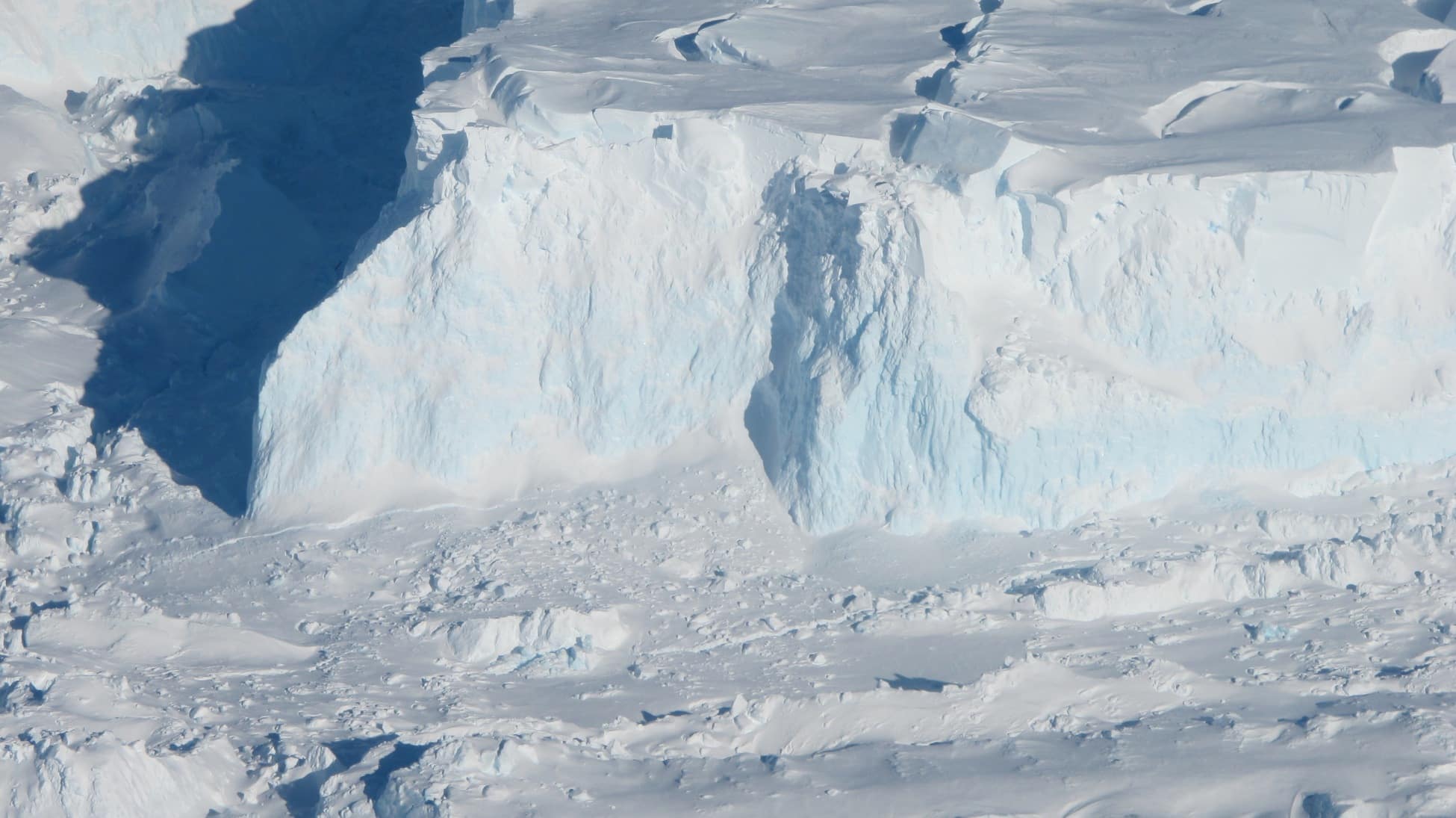⇧ (VIDEO) You might also like this affiliate content
Glaciologists are discovering that the Thwaites Glacier is melting at breakneck speed due to the infiltration of warm, high-pressure seawater several kilometers below its shoreline. It is a complex physical process that is created by the direct contact of sea and fresh water from the glacier. The results of the study show that the Antarctic ice sheet is more sensitive to ocean warming than previously thought.
Located in West Antarctica,
Thwaites is one of the most unstable and changing glaciers in the world. Covering an area of approximately 192,000 square kilometers (more than four times the size of Switzerland), it contributes 4% to global ocean level rise annually. Its complete loss would cause sea levels to rise by 3 meters, hence the nickname “glacier of the apocalypse”.
The cycle of seasonal melting and loss of glaciers is governed by a complex process, particularly sensitive to ocean warming. Part of this process takes place at a boundary called the “anchor line”, which is between the “stranded” ice (the floating part but still attached to the shore) and that floating in the ocean. Stranded ice melts faster at its base, which is its first point of contact with seawater, thus weakening the entire structure. This is because the freezing point of a freshwater mixture of ice and seawater is −1.9
°C, compared to 0°C for fresh water only. However, rising temperatures are disrupting ocean currents, which push warmer seawater toward the coast of Antarctica.
Show a strong climate message 🌍
On the other hand, seawater that comes into contact with the bottom of the glacier and fresh water created by geothermal flow and friction accumulate and must flow somewhere. These combined waters then infiltrate the ice through natural channels or accumulate in cavities. This creates enough pressure to lift the ice above the water. ” There are places where the water is almost at the same pressure as the overlying ice. So all it takes is a little more pressure to make the ice rise », explains ua University of California press release in Irvine (UCI), Eric Rignot. ” The water is then compressed enough to raise a column of ice almost a kilometer long “, he adds.
However, the observation of these dynamic processes faces great difficulties, mainly related to the lack of budget. According to Rignot, even today, glaciologists benefit from the same budget as in the 1990s, so until now precise predictions about the evolution of the Thwaites Glacier have been lacking. ” In the past we had sporadically available data and with only these few observations it was difficult to understand what was going on “, he says.
As part of their new study, published in the journal
PNAS, Rignot and his colleagues collected the most precise satellite observation data to date. Their results suggest that the rate at which the glacier is developing is underestimated, potentially requiring a reexamination of sea-level rise prediction models.

Graphic showing high-pressure warm seawater infiltration beneath Thwaites Glacier. © Eric Rignot et al.
Infiltration of sea water up to several kilometers under the ice
To conduct their research, the researchers used data collected between March and June 2023 by the satellite network of the Finnish company ICEYE. The network forms a constellation that flies above the planet in a polar orbit, which allows, due to the rotation of the Earth, to regularly fly above the entire globe. Each satellite has a synthetic aperture interferometric radar, which enables precise monitoring of the ascent and descent, as well as the curvature of the stranded Thwaites ice. More specifically, it allows you to record the displacement of your anchor line with daily resolution and a level of precision of the order of one centimeter.
The researchers found that the cycles of glacier rise and fall were closely aligned with tidal cycles. During high tide, seawater infiltrates and then gradually flows back under the glacier. It also sometimes happens that he manages to infiltrate further and remains trapped there. Radar data showed that warm seawater under high pressure could leak up to several kilometers under the glacier, through channels 5 to 10 centimeters thick.

3D view of the tidal movement of the Thwaites Glacier. The contour levels are those of the bed topography at 50 meter intervals. Each interferometric fringe color cycle corresponds to a phase change of 360 degrees, which is equivalent to a displacement of 1.65 cm relative to the ice surface. The interferogram is superimposed on a Landsat 9 image taken in February 2023. The data show that the flexure of the ice varies during the tidal cycle, indicating that pressurized seawater seeping beneath the land ice produces strong heat exchange with the glacier floor. © Eric Rignot/UCI
However, although they suggest that the magnitude of the impact of ocean warming on the Thwaites Glacier is underestimated, the results do not yet allow a precise estimate of how long seawater infiltration might be irreversible. However, the researchers believe it will spur research in the region to improve forecasting models. ” By improving the model and focusing our research on these critical glaciers, we will try to get these numbers at least over decades rather than centuries. », concludes study co-author Christine Dow, from the University of Waterloo, Canada.
